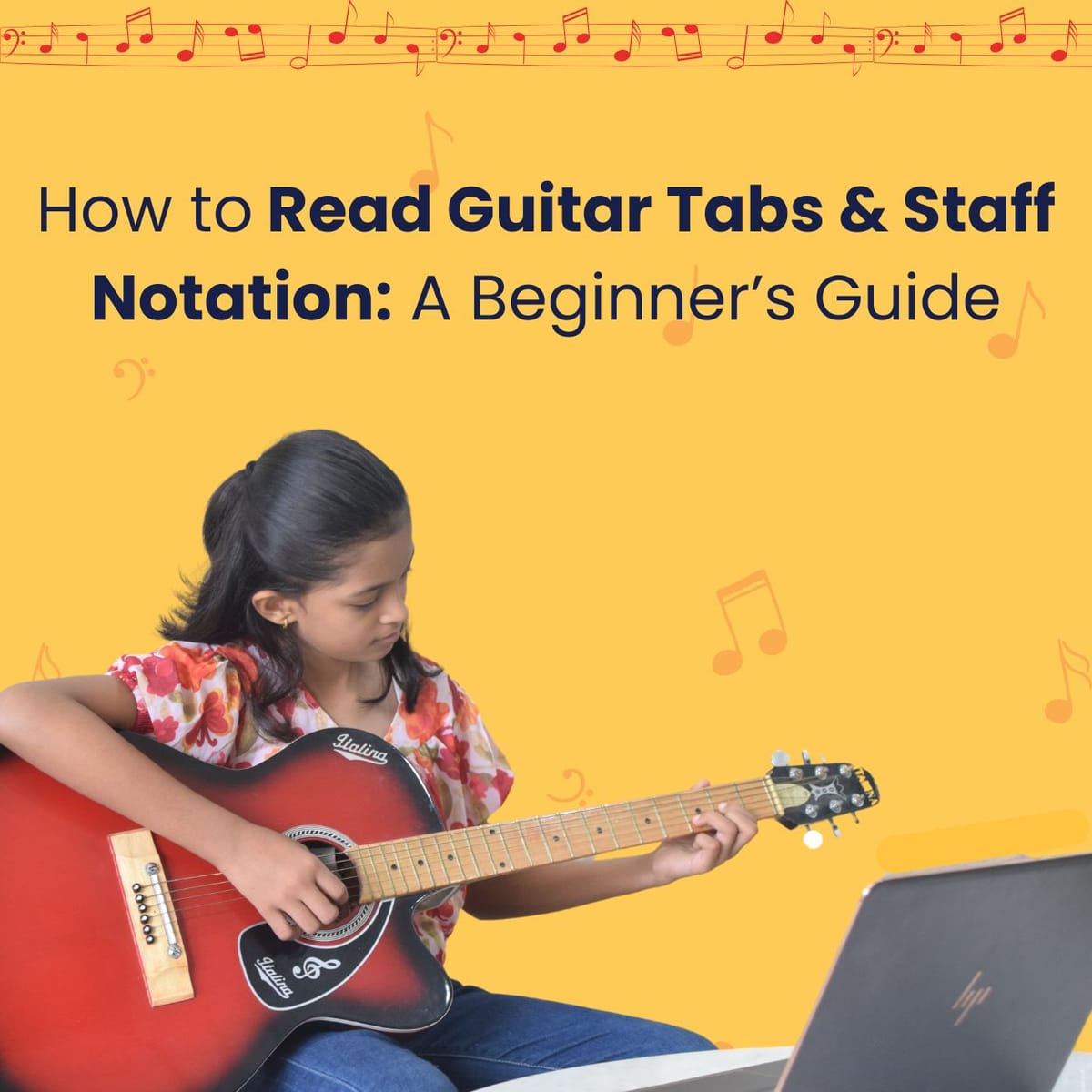
How to Read Guitar Tabs & Staff Notation: A Beginner’s Guide


If you’re learning to play the guitar, you’ve probably come across two common ways to read music: tablature (tabs) and staff notation. But what’s the difference between the two? More importantly, how do you use them to improve your playing?
Tabs are a straightforward way to see where to place your fingers on the fretboard, while staff notation provides deeper musical details like rhythm and articulation. Mastering both can help you become a more versatile guitarist.
In this guide, we’ll break down both systems in a simple and easy-to-follow manner, so you can start reading music like a pro!
1. What is Tablature?
Tablature, commonly called tabs, is a simple way to read music, especially for fretted string instruments like the guitar, bass, and ukulele. Instead of traditional musical notation, tabs show exactly which string to play and which fret to press.
How Tablature Works
- A tab sheet consists of six horizontal lines representing the six strings of the guitar.
- Numbers on the lines indicate which fret to press.
- The top line represents the highest-pitched (thinnest) string, and the bottom line represents the lowest-pitched (thickest) string.
Example of Tablature:
In the example below, the 6th string (lowest) starts with the 5th fret, followed by the 8th fret.
Advantages of Tablature:
✅ Easy to learn – Great for beginners.
✅ Tells you where to place your fingers – No need to learn standard notation.
✅ Widely used in modern music – Tabs are common for guitar songs across various genres.
However, tabs don’t provide information about rhythm. That’s where staff notation comes in.
2. Staff Notation:
Staff notation is a more detailed system that not only shows the notes to be played but also their timing and rhythm. It includes important musical elements such as time signature, repeats, articulations, and note duration.
To read staff notation, you need to focus on two things:
- Identifying the notes on the staff
- Understanding the rhythm
A staff consists of five horizontal lines. Unlike tablature, notes can be placed on the lines or in the spaces. Each position represents a different note.
Understanding Note Durations:
- Whole Note (Semibreve) – Lasts four beats
- Half Note (Minim) – Lasts two beats
- Quarter Note (Crotchet) – Lasts one beat
- Eighth Note (Quaver) – Lasts half a beat (two together make one beat)
- Sixteenth Note (Semiquaver) – Lasts one-quarter of a beat (four together make one beat)
These note durations help define the rhythm of a song.
In the picture above, we can see now different notes are looking like in a staff sheet. In contrast to the tablature, it is to be understood that both lines and space in the staff sheet tells about a note.
These are the notes denoted to the lines of the staff.
These are the notes denoted to the space in the staff.
When the notes are clear, the next information a staff note provides is about the rhythm of the song/melody. This mostly is denoted by the type of notes which are being used.
There are mostly these types of notes (based on beat and length)
a. Whole Note (Semibreve):
A whole note has a length of four beats.
b. Half Note (Minim):
It lasts for two beats.
c. Quarter Note (Crotchet):
It lasts for one beat.
d. Eighth Note (Quaver):
It lasts for half a beat. Two of them together would take up one beat. The stem has the addition of a tail on the end.
e. Sixteenth Note (Semiquaver):
This note lasts for a quarter of a beat, so four of them would take up one beat.
Thus the type of notes tell us about how many beats the note will last and hence gives us the idea about the rhythm of the song.
3. Note of guitarist:
Most sheet music for guitarists includes both tablature and staff notation. This gives an advantage—
- You can use tablature to see where to place your fingers.
- You can use staff notation to understand the timing and rhythm.
Above is an example of a piece of sheet for a guitarist where one can see how the staff notation and tablatures goes so that any guitarist can rely on them simultaneously to read and play through the given sheet of music.
Reading music may seem tricky at first, but with regular practice, it gets easier. Start with tablature, then move on to staff notation, and gradually use both in your playing. Stay consistent, keep practicing, and you'll improve over time. Ready to learn guitar? book your free trial class now!
Keep practicing, and soon you’ll be able to play your favorite songs with confidence!
~Turja Das Gupta
SME, Guitar & Ukulele
Spardha School of Music